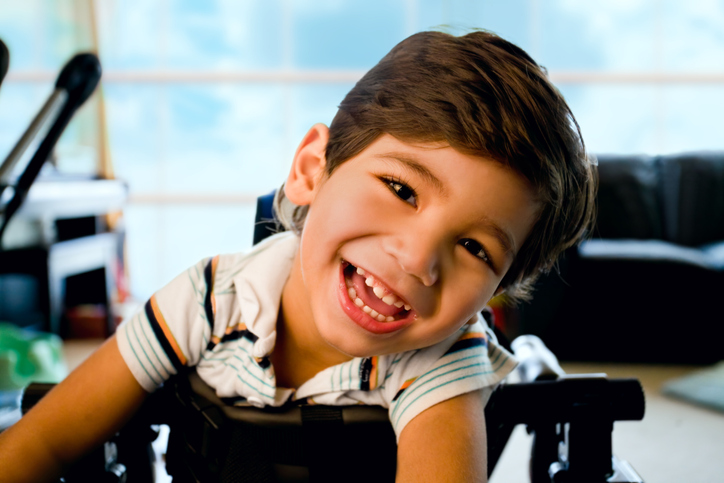
What is Cerebral Palsy?
Cerebral palsy is a combination of different disorders affecting the movement and posture of an individual. It mainly occurs due to brain damage during the early stages of fetal development or before the birth of a child.
The signs and symptoms may start appearing in children from an early stage and usually causes impaired movement in the body. Some other signs you might witness in an individual with cerebral palsy include:
- Unusual posture
- Unsteady walking
- Spasticity in limbs and trunk
- Involuntary movements
- Floppiness
- Exaggerated reflexes
Some people may also suffer from a combination of these signs. For example, estimates indicate that nearly 764,000 U.S. citizens have cerebral palsy, and the global number of people with the condition is much larger.
In these conditions, it’s necessary to understand the symptoms and causes of cerebral palsy. So here’s a simple breakdown of further information about cerebral palsy that you should keep in mind.
Symptoms
Cerebral palsy symptoms vary for almost every person because they may have different motor skill problems. However, most symptoms of cerebral palsy are movement or coordination related. The impact of cerebral palsy on a person’s life can also vary, as some people may experience it throughout their body, while others may face it in a particular limb.
Apart from coordination, individuals can also experience problems with speech, eating (in some extreme cases), development, etc.
We’ll discuss the symptoms for each of these categories accordingly:
Movement and Coordination
Movement and coordination problems usually include stiff muscles and spasticity (exaggerated reflex is the most common movement disorder for people with cerebral palsy.
Some people may also experience variations in muscle tone. It means the muscles can either be too stiff or too floppy.
Other people with cerebral palsy may also experience a lack of balance and muscle coordination, i.e., in more severe cases, people with cerebral palsy undergo tremors or involuntary jerky movements. All these symptoms make it nearly impossible for these people to function physically without assistance. Other cases may include slow, writhing movements that favor one body side.
Speech and Eating
Since cerebral palsy affects different areas of the body, the full extent of the symptoms can extend beyond motor skills. For instance, cerebral palsy can cause delays in speech development.
After all, the human body speaks using muscles, which can be affected by health conditions. Therefore, several individuals with cerebral palsy have difficulty speaking. Moreover, individuals (usually babies or younger individuals with cerebral palsy face problems with simple eating actions like:
- Sucking
- Chewing
- Eating, etc.
Cerebral palsy can also impact food intake because their bodies cannot push the food through the digestive tract. As a result, they may also exhibit excessive drooling.
Developmental Issues
People with cerebral palsy may experience severe developmental issues. Since most individuals with CP have it by birth, they may face:
- Problems with motor skill milestones
- Learning difficulties
- Intellectual disabilities
- Delayed growth
Causes
Cerebral palsy can occur in individuals during early stages such as infancy or pre-natal. There’s a variety of causes for cerebral palsy, which include:
- Genetic disorders and brain development problems
- Fetus underdevelopment impacted by a maternal infection
- A disruption in blood supply to the fetus inside the mother
- Bleeding into the brain during the early stages of development
- Infections that can cause inflammation in fetuses
- An injury to the fetus from a motor vehicle accident, physical abuse, or fall
- Oxygen delivery to the fetus stops the development of the brain.
10 Tips for Caring for a Child with Cerebral Palsy
Caring for a child with cerebral palsy is one of the most challenging tasks you can face if you do not have the correct info. People need to understand how to care for a child with CP, which is why we will list down some tips you can use to make the process easier for you.
1. Start Organizing a care Routine
Organizing emergency requirements can help you in case there’s an urgent problem or increase the efficiency of the overall care process. For example, have the doctor’s number, emergency contact, medical records, etc., accessible to provide on-time care.
2. Keep Learning
It’s crucial for parents caring for a child with CP to understand their child’s health as they may have to make decisions like choosing treatment options and choosing professionals.
3. Promote an Active Lifestyle
A child with CP may not be as active as others, but you still need to provide a healthy lifestyle for them. Increased activity can improve muscle growth, allowing individuals with CP to lead better lives.
4. Improve their Diets
A diet rich in fruits and vegetables is one of the best options for children with CP. Lean protein and fiber are also essential, so you should consult a pediatrician before making final dietary changes. Some children cannot eat with their mouths, so they may require a GT (gastric tube) to deliver the food.
5. Provide Therapy at Home
You can provide your child with the best therapy at home if you understand how to perform it correctly. Consult a professional to learn how to exercise your child without a professional. It will make caring for your child much simpler.
6. Help them see a New Perspective
A child with CP might have some limitations that others may not, so it’s essential to focus on things they can do. As the parent or guardian, you can also do these things along with them to provide encouragement.
7. Consider Outdoor Activities
Like other children, a child with CP loves spending time outdoors and performing new activities. So you can go out with them and work on craft projects, sight-see, etc. It’s an excellent way to alleviate negative feelings.
8. Befriend other Parents
It’s common for parents caring for a child with CP to feel overwhelmed because of the responsibility. Fortunately, interacting with parents like yourself can motivate you to provide better care for your child. You can also ask them for tips on looking after their children’s needs, but remember that what works for some parents doesn’t work for everyone.
9. Utilize Available Resources
Educating yourself on CP is an ongoing process. You can use various resources, articles, research, etc., to be more prepared.
10. Care for yourself
Ensuring your health is crucial if you wish to care for your child with CP. Therefore, get enough sleep, eat healthily, and try to exercise 3-4 times a week. These simple tips can help you better care for your child with CP.
How to Donate and Bring Awareness
You can do your part to improve people’s lives with CP by donating, increasing awareness, and getting more information about cerebral palsy at https://worldcpday.org/.




